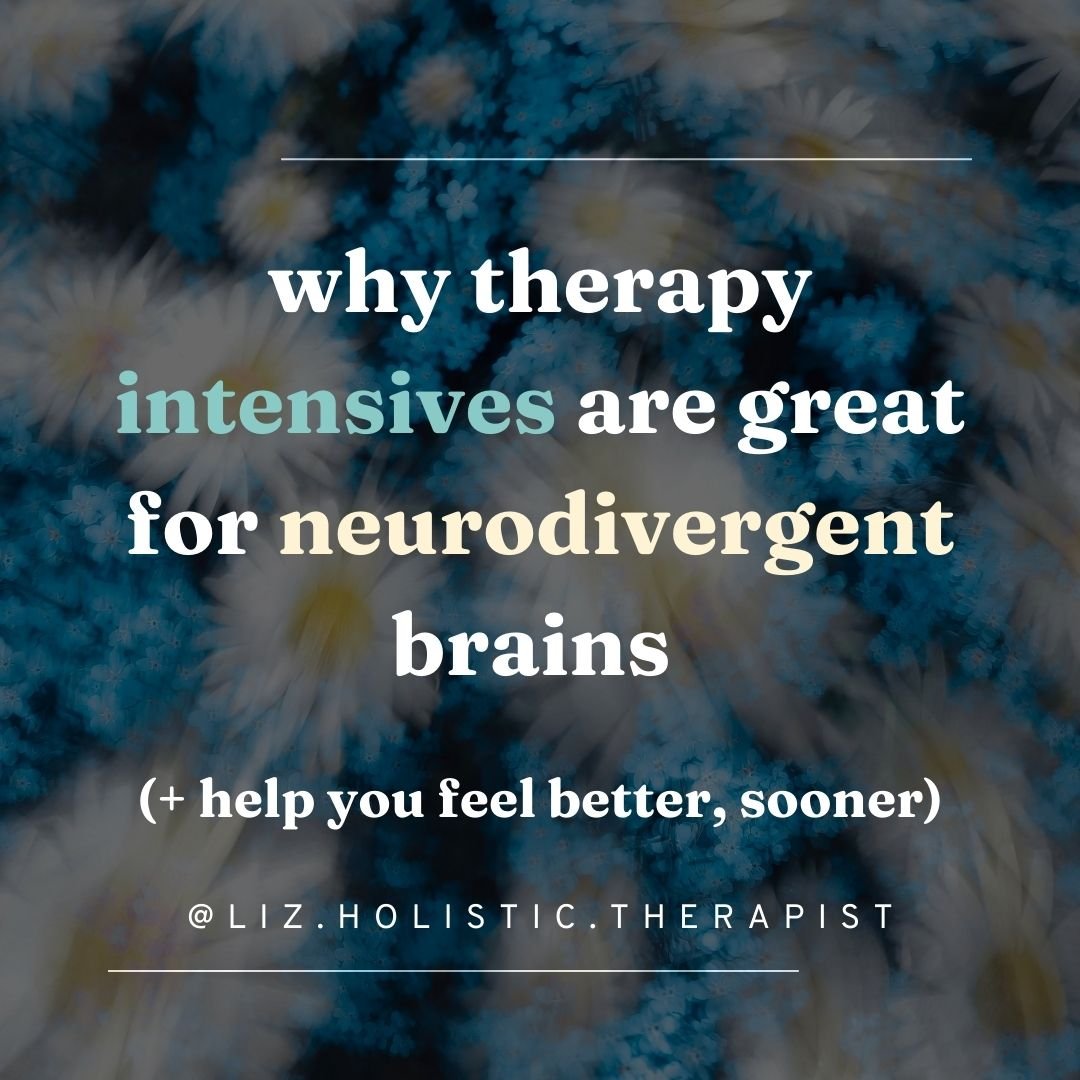What’s Positive States Practice? | Neuroplasticity & Resourcing in EMDR Therapy
Positive States Practice is not about bypassing difficult emotions. It’s about nurturing the positive pathways that are already there, so that you can navigate difficult experiences in a more resourced way. Let’s explore what this practice looks like, and how it can enhance outcomes in EMDR trauma therapy.
What’s EMDR therapy?
EMDR (Eye Movement Desensitization & Reprocessing) is an evidence-based therapy that helps you process distressing memories, through a body-based technique called bilateral stimulation.
Through EMDR therapy, you can shift the way that memories are stored in the brain, decreasing their negative emotional charge.
(Pssst…. Not sure what “bilateral stimulation” means? Check out this blog post: Bilateral Stimulation — The Key to Brain-Body Healing in EMDR Therapy.)
What’s resourcing?
Resourcing is the initial phase of the EMDR therapy protocol, designed to regulate your nervous system through mindfulness and self-soothing practices.
Resourcing allows you to confront difficult experiences without becoming overwhelmed.
It creates flexibility and safety in your nervous system – a sense that you have a “home base” to come back to, even as you’re processing distressing images, emotions, sensations, and memories in EMDR sessions.
There are a variety of resourcing practices to choose from – including Calm Place, Container, Inner Ally, Grounding Tree, and Healing Light Stream.
Today, we’ll explore the Positive States Practice.
What is Positive States Practice?
This practice can be guided by your EMDR therapist, or self-guided. Here’s how it goes:
Find a comfortable position – seated, lying down, or moving around. Follow your body’s intuition.
Recall a time when you felt a positive emotion – happy, grateful, inspired, energetic, connected, confident, creative, etc.
Focus on that memory. Imagine you’re traveling back in time and landing right back in that moment.
Notice what you were doing and what was happening around you.
What do you see? What do you hear? What can you smell, touch, and taste?
What was the best part of that memory?
What moment stands out to you the most? Do any images or words go with that?
Now, observe your body in the present moment. Where do you feel the positive emotion? In your heart, stomach, hips, legs, hands, feet, or somewhere else?
Notice any sensations in your body. Maybe you feel warmth, grounding, tingling, expansion, calmness, relaxation… or something else.
Stay with this experience for as long as you wish.
See how big the positive feeling can grow. If it starts in one area of your body, can you use your next inhale to expand it to another area?
Take a few deep breaths. Invite the positive energy to grow from head to toe.
How does Positive States Practice work?
Our brains are incredibly adaptive, constantly rewiring themselves based on our experiences. This process is called neuroplasticity, allowing us to change and grow across time.
We can use neuroplasticity to our advantage.
As Dr. Dan Siegel, best-selling author and executive director of the Mindsight Institute, says, “Where attention goes, neural firing flows, and neural connection grows.”
In other words…
When we intentionally focus on positive feelings (like hope, joy, and gratitude), we’re strengthening the neural pathways associated with these emotions.
The more we revisit these pathways, the easier it becomes to access these positive feelings.
For those of us who are prone to getting stuck in challenging states (like hopelessness, despair, and rumination), Positive States Practice gently trains the brain to notice and explore alternative pathways.
Is Positive States Practice meant to suppress negative emotions and just focus on the positive?
Not quite!
Positive States Practice is not about bypassing difficult emotions. It’s about nurturing the positive pathways that are already there, so that you can navigate difficult experiences in a more resourced way.
When we allow ourselves to spend time in a positive state that we can authentically access (like gratitude, compassion, or self-connection), it actually expands our window of tolerance (the range of emotional, sensory, and psychological stimuli that we can tolerate).
Then, when challenging emotions arise (like grief, frustration, or sadness), we can be with it without needing to push it away. We experience it within an expanded window of tolerance.
Positive States Practice doesn’t make difficult feelings go away – it makes difficult feelings easier to bear, adding a quality of lightness, expansion, or a sense of getting “unstuck.”
How to create your own Positive States Practice
Begin by choosing a positive emotion you’d like to cultivate – such as joy, gratitude, peace, compassion, creativity, or confidence.
Choose a medium of expression: writing, meditation, art, or music.
Write for 5 minutes. Journal about a time you felt this emotion. Write a poem. Or make a list of things you’re grateful for.
Meditate for 5 minutes. Remember a time when you felt this emotion, and focus your attention on this memory. Notice your breathing and your body sensations as you observe this experience.
Create a piece of art that reflects the positive emotion you’re focusing on. Gather your favorite art supplies, such as crayons, markers, paints, or clay. Let your imagination run free.
Choose a song that evokes the positive emotion you’re wanting to cultivate. Listen to the song and move your body with the music.
Looking for an EMDR therapist who can guide you through resourcing & trauma healing?
SCHEDULE A FREE CONSULTATION TO WORK WITH ME
{FOR COLORADO RESIDENTS}
Therapy services are available virtually, for adults & couples located in Colorado.
About the Author
Liz Zhou is holistic trauma therapist providing virtual therapy services in Colorado. She helps highly sensitive, neurodivergent adults and couples heal from the past and connect with their authentic selves. Liz’s specialties include EMDR, IFS, psychedelic integration, and therapy intensives.





